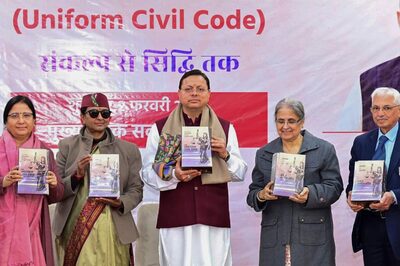
views
Famed British hunter, tracker and naturalist, who also penned a number of successful books, Jim Corbett was born on July 25, 1875. A high ranking colonel in the British Indian Army, he was frequently called upon by the then Government of the United Provinces of Agra and Oudh, to kill man-eating tigers and leopards that were preying on people in the nearby villages of the Garhwal and Kumaon divisions and many of his books, apart from fiction, are based on his adventures hunting the ferocious felines in the Indian vales.
On his 144th birth anniversary, here take a look at 5 books written by Jim Corbett:
Man-Eaters of Kumaon (1944): It details the experiences that Corbett had in the Kumaon region of India from the 1900s to the 1930s, while hunting man-eating Bengal tigers and Indian leopards. Containing 10 stories of tracking and shooting man-eaters in the Indian Himalayas, the book is the best known of Corbett's works.
The Man-Eating Leopard of Rudraprayag (1947): The Leopard of Rudraprayag was a male man-eating leopard, reputed to have killed over 125 people. It was eventually killed by hunter and author Jim Corbett. In the book, the author and hunter gives a carefully-detailed account of a notorious leopard that terrorized life in the hills of the colonial United Provinces.
My India (1952): The collection contains classic tales about the humans who lived in the poignant rural world of the Indian foothills. Corbett displays great sympathy for these people through his observations of their life, traditions, and culture.
Jungle Lore (1953): Jungle Lore is the closest Jim Corbett ever came to an autobiography, revealing his life-long passion for the people, jungle, and animals of the Kumaon hills in the Himalayan foothills, and his despair at humanity's estrangement from its environment.
My Kumaon: Uncollected Writings (2012): The book includes Jim Corbett's unpublished writings on man-eaters, nature, and his beloved Kumaon, personal letters, articles written for newspapers and gazettes by his contemporaries, and letters exchanged between Corbett and his publisher.




















Comments
0 comment